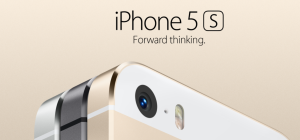Today, Apple announced the upcoming release of iPhone 5S and iPhone 5C. There are descriptions and discussions about the two iPhones to be released. Unfortunately the revelation that neither phone will have NFC capabilities is a disappointment for the NFC ecosystem.
Despite this fact, iPhone Touch ID, a new fingerprint sensor feature for authentication, may have significant implications for the NFC ecosystem. One of the values that NFC provides is security. Common practice is to save sensitive information in the Secure Element (SE). For example, ISIS, a joint venture between AT&T, Verizon, and T-Mobile, uses this practice for secure mobile payment. With this approach, permission is needed to access SE. Permission is granted after a successful authentication from carriers.
Touch ID has the potential to be utilized as an authentication option for accessing SE. Moreover, Touch ID could limit the need for using UICC/SIM based SE. UICC/SIM based SE is an operator-centric option, since carriers control the access of the UICC/SIM. It provides ultimate security because no one can access it without a carrier’s permission.
Many stakeholders in the NFC ecosystem want to bypass carriers’ control over SE. Touch ID has the potential to shift our perspectives on security and authentication. What are your thoughts on this possibility?


If you are interested in watching NFC in action, you might want to attend WIMA NFC & Proximity Solutions Conference in San Francisco on Oct 28-30. Early bird discount is offered until September 13th. http://www.wima.mc/usa/2734-registration
Apple has changed the play field, and the rules for that matter, for the authentication conflict between the carriers and the platforms. The authentication of the user is not something that the carriers can ever truly master as they are removed from the user by the users own device. I expect that Apple’s Touch ID will have more acceptance by users and developers in a matter of months than the impact of all the other existing and cumbersome cloud processes summed together. Transparent bio-factor authentication, at the device level, adds value and security – and removes hassle.
The authentication objective for transactions is: Is it really you?
The objective for the user is: Do what I want – now! And don’t hassle me!
As we have seen for years – the user wins the transaction argument as they have plenty of other ways to pay. Cool may be cool, but hassle trumps cool. Apple has shown us a cool hassle free authentication process. Time for others to innovate to the same level.
Thanks for sharing your insight. I also believe Touch ID will make an impact. Today’s WSJ published an article “Stay Secure Without Passwords” http://on.wsj.com/169zpQB to address authentication. It’s a good reading.